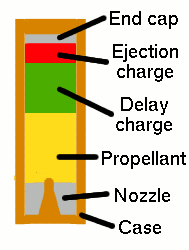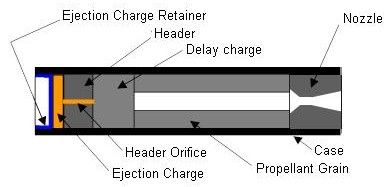Hello Everyone!
I am new to model rocketry and completely do everything on my own.So,got struck at a point
Problem is "Does the position of Igniter really matter ?"
I mean where should we keep the igniter is it at the opening end of motor or else some what deep inside the motor?
Please help e and also tell the science behind it.
Hello there Mohinish,
Hello Everyone!
I am new to model rocketry and completely do everything on my own.So,got struck at a point
Problem is "Does the position of Igniter really matter ?"
I mean where should we keep the igniter is it at the opening end of motor or else some what deep inside the motor?
Please help e and also tell the science behind it.
Well hello there Mohinish,
Actually I’m also curious about where to place the igniter. I’ve made tests over tests regarding this and have seen al sorts of behaviors using the exact size motor with the exact APCP based propellants. Have placed the igniter just a bit over the nozzle, in the middle and way up.
I would have to actually have pressure sensors in all 3 positions to have a clearer idea.
Hello Everyone!
I am new to model rocketry and completely do everything on my own.So,got struck at a point
Problem is "Does the position of Igniter really matter ?"
I mean where should we keep the igniter is it at the opening end of motor or else some what deep inside the motor?
Please help e and also tell the science behind it.
Hello there,
Well I see most if not all recommend to place the igniter deep into the motor until it won’t go further no more. Yet I’ve made tests using the same size motor with the same size propellant grains (APCP) with the same core diameter, same nozzle and have just modified the igniters position in 3 different locations. Right before the exit, at the middle of the motors length and all the way above till it won’t go up no more.
My thoughts for right above the nozzle is that too much pressure is at the exit, since there is pressure and APCP BR increases with pressure the upper pressure can’t exit and you end up with a series of (big explosion like) bursts. Which is definitely not useful and is dangerous. In the middle it is just the same case.
By the way the propellant ignition towards the top will never advance as if it where a fuse or as if you where lighting a strip of propellant in open air. That’s way to slow. It travels upward much much faster because of the pressure.
Igniting it from the top will further increase the burn rate and a lot more pressure will be created and the more chances there will be for the motor to explode.
This of course depending on the specific mixture of the propellant, the type and size of the core, the motors length and the nozzle throat.
So from my point of view this is actually a very good question but has not got a definite answer because there are so many things depending on it.
But it certainly makes a difference where you place the igniter.
If you are using only commercial motors, then stick to the motors specific guidelines, but if you’re making your own propellant, be it KNO3 based AP based or KP based or whatever, we’ll then your in to a lot of math that doesn’t always result as predicted.
Good luck and yes I know I didn’t quite answer you’re main concern.






